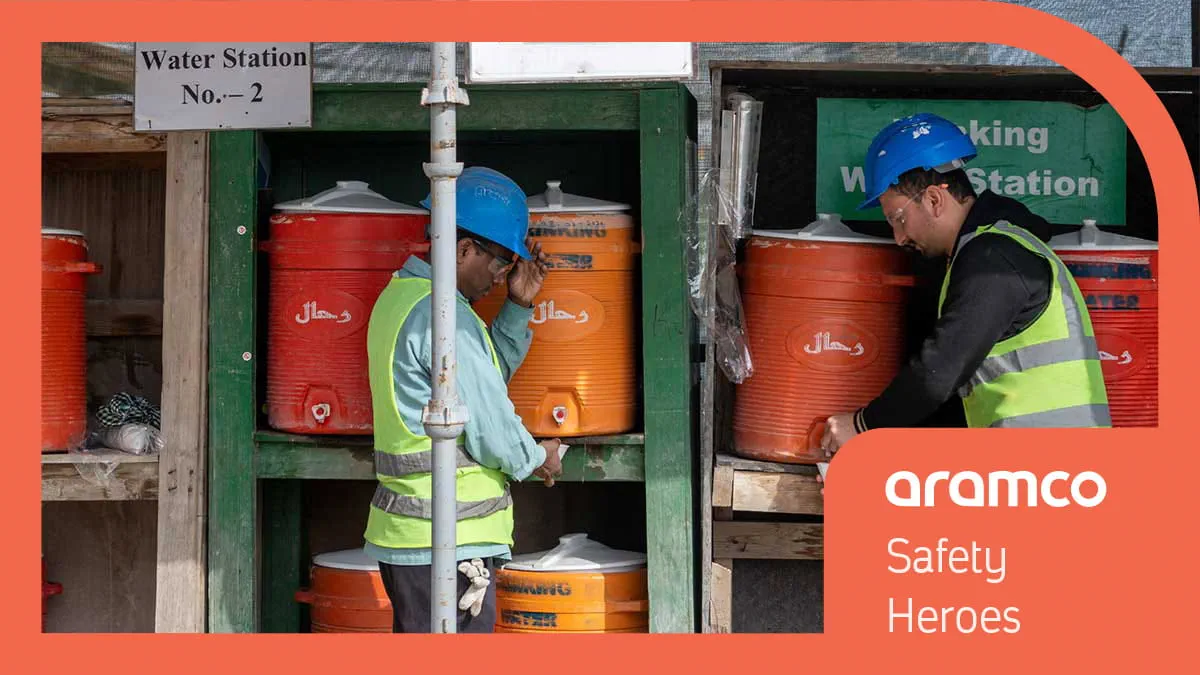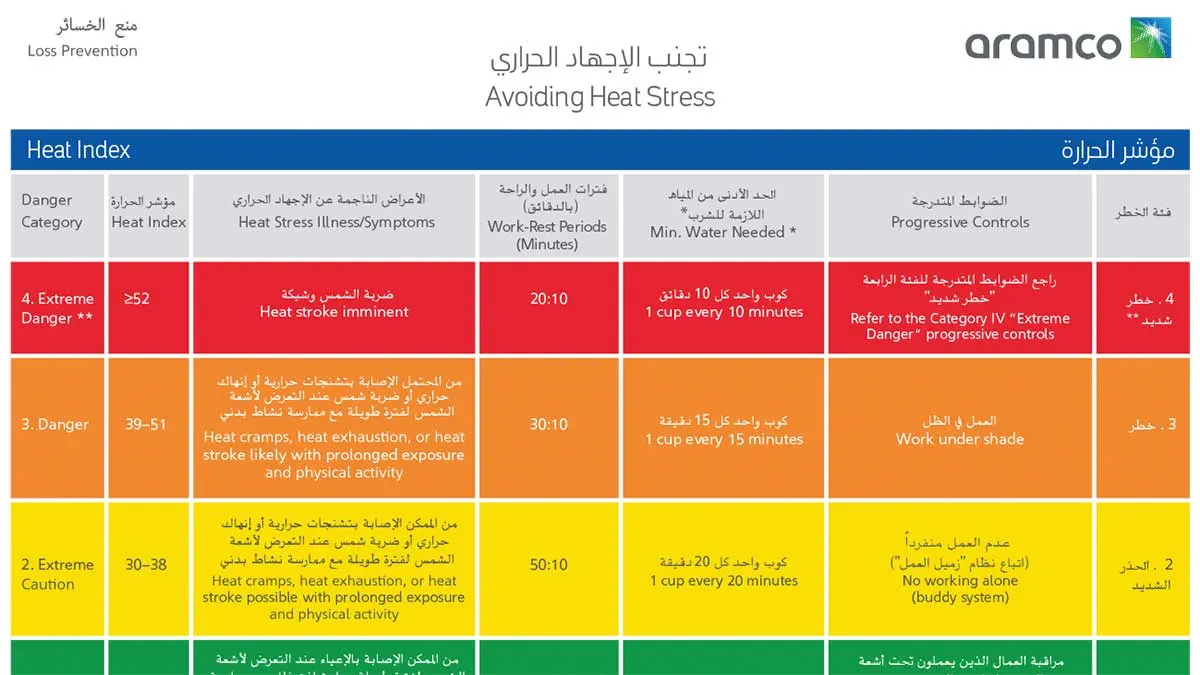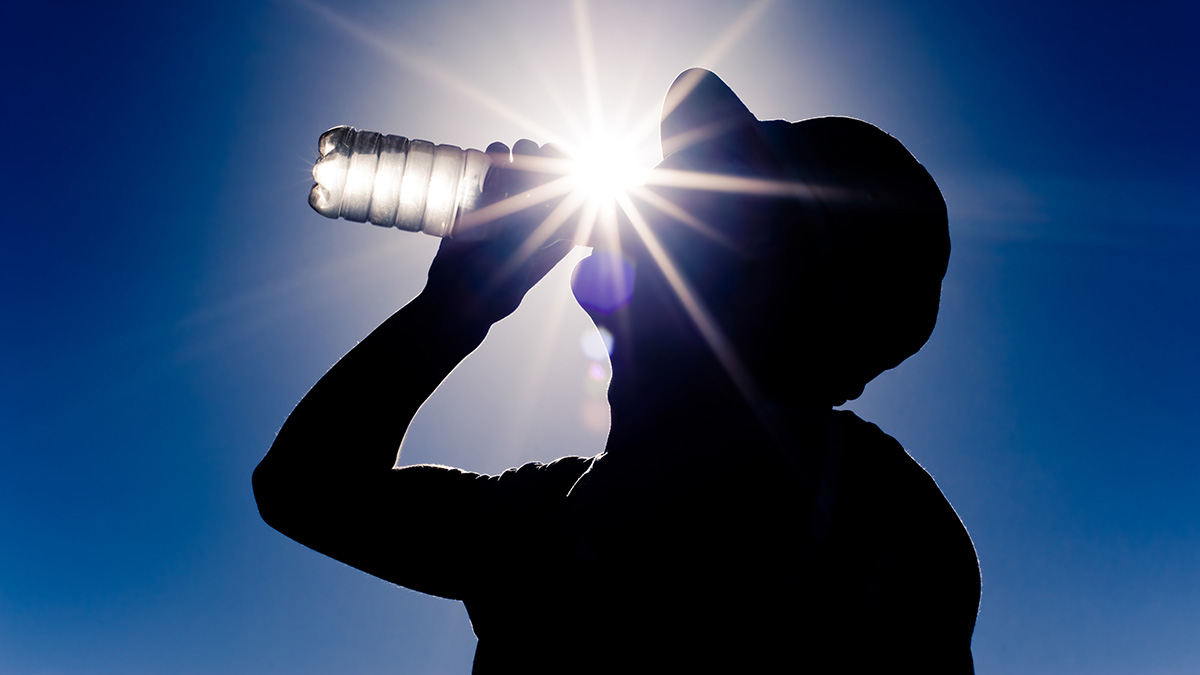Heat Safety
A few tips on how to beat the heat

Global August 20, 2024
As summer arrives, it's critical to be proactive in preventing heat-related stress and illness.
Summer is here, and everyone needs to be aware of the dangers associated with heat stress.
Any person working outdoors or in areas where heat hazards exist must understand the associated risks. Knowing how to deal with heat-related hazards is crucial.
To prevent heat stress, be sure to:
Acclimatize
Work shorter shifts until your body adjusts to the heat.
Drink water
Take regular water breaks.
Know the signs
Be alert for any signs or symptoms of heat-related illnesses.
Rest
Take frequent breaks in a shaded area.
Knowing your environment
In the Kingdom, summer temperatures average about 45 degrees Celsius (113 degrees Fahrenheit), but readings of up to 54 degrees Celsius (129 degrees Fahrenheit) are possible.
In addition, industrial equipment such as furnaces, oil tanks, turbines, diesel engines, and excavated ditches can produce dangerous temperatures.
So can working with heavy equipment outdoors in direct sunlight. Even wearing the necessary personal protective equipment can raise one's body temperature to dangerous levels.
Remember: anyone working indoors or outdoors in temperatures exceeding 25 degrees Celsius (77 degrees Fahrenheit) can suffer heat-related symptoms.

One way to help determine the risk of heat-related illness for outdoor workers and proper prevention measures is through Aramco's heat-index card.
Click here to download a copy.
The symptoms
If you are working in these conditions, it is important that you can recognize symptoms of heat stress and illness.
These include:
Heat cramps: Cramps in muscles in your arms, legs, or stomach, as well as hot, moist skin and slightly body temperature can be a warning of dangerous heat-induced illnesses.
Heat exhaustion: Intense thirst with heavy sweating and a body temperature exceeding 38 degrees Celsius (100.4 degrees Fahrenheit) can indicate heat exhaustion.
Other signs include a rapid pulse; cool, moist skin; nausea and vomiting; weakness; dizziness; headache; blurred vision; pale or flushed skin; mood changes; confusion; and/or fainting.
Heat stroke: Victims of heat stroke often suffer dry, hot skin with no sweating, a body temperature over 40 degrees Celsius (104 degrees Fahrenheit); a strong, rapid pulse; chills; weakness; nausea; vomiting; and confusion.
In later stages, heat stroke victims can suffer seizures or convulsions; often collapse, and loss of consciousness can occur, even potentially leading to death.
Acclimatization
The process of the body adapting to heat is known as acclimatization.
Acclimatization may be lost in as few as three days away from a particular environment. People returning to work in high heat conditions after a time away must be reacclimatized.
Acclimatization helps the body redirect blood to the skin's surface. When we are acclimatized, the heart becomes more efficient, and sweating starts sooner.

Worker responsibilities
If you are working in a potentially high heat environment, make sure to take regular breaks, drink enough water, and always work with a partner.
Talk to your supervisor about the heat index level and controlling measures, as well as any medical conditions you may have experienced— in particular past heat-related illnesses.
Wear light-colored, lightweight, and breathable clothing when possible.
And most importantly, know and be alert for signs of heat-related illnesses in yourself and others.
If observed, take appropriate action. Use Stop Work Authority and seek medical assistance if need be, and immediately report potential heat exhaustion and heat strokes to emergency services by dialing 911 from any Aramco phone (or direct dial the number for the Area Emergency Center.)
Other risk factors
In addition to PPE, other factors can increase risk of heat stroke. Age, weight, medications, and one's own medical history can influence susceptibility to heat stress, so make sure to visit a doctor regularly and behave in an appropriate manner.
In considering your environment, see shade, use ventilation and cooling devices, drink plenty of water, and take breaks.
Also, avoid heavy meals and caffeine. Drink plenty of water instead.
And again, don't forget to take breaks; and, of course drink water.
How to respond to signs of heat distress
Knowing how to respond to signs of heat distress or illness can be a matter of life and death.
Here are a few guidelines.
Heat Cramps
- Stop all activity and move the victim to a cool, shaded area
- Loosen clothing and remove heavy clothing
- Drink water or sports drinks that have electrolytes
- If symptoms continue or get worse, seek medical aid
Heat Exhaustion
- Perform all the actions for heat cramps
- Call for medical help
- If he or she is conscious, give the victim water or sports drinks that have electrolytes. Do not give fluids if the victim is unconscious.
- Shower or sponge the victim with cool water.
Heat Stroke
- Stop all activity and move the victim to a cool, shaded area
- Immediately call for medical help
- Perform all the actions for heat exhaustion
- Have the victim lie flat with feet elevated
- Monitor the victim's breathing, and perform CPR if required and you are trained to do so.
Nobody experiencing heat exhaustion or stroke should be left alone or unattended until after a medical doctor has approved the action. Also, heat victims may not return to work until approved to do so by a medical doctor.



